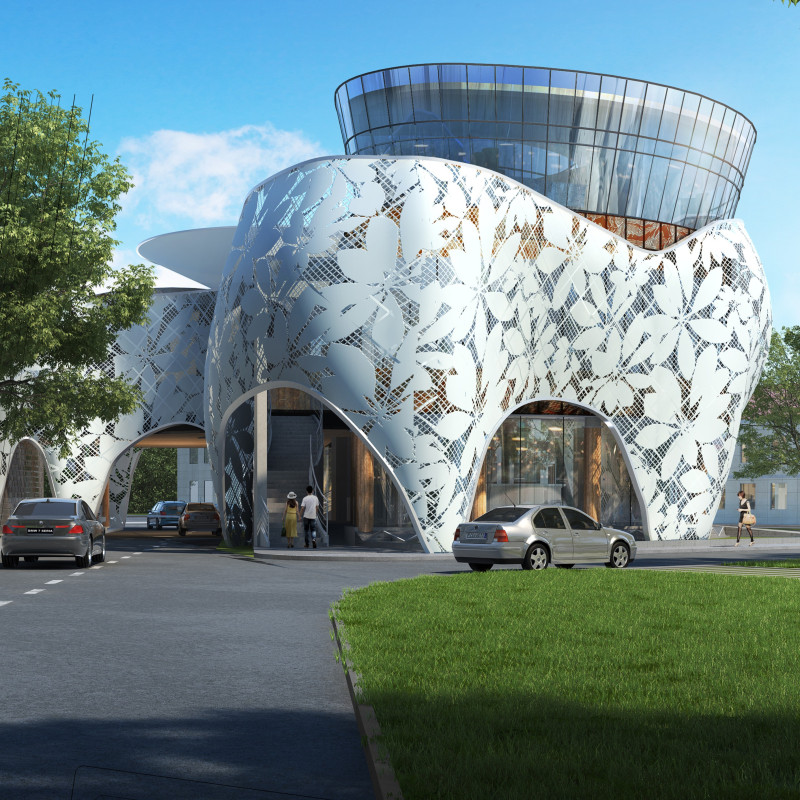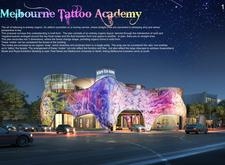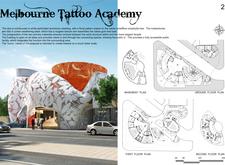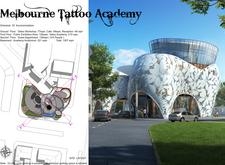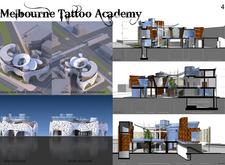5 key facts about this project
# Analytical Report on the Melbourne Tattoo Academy Architectural Design Project
## General Overview
Located in Melbourne, Australia, the Melbourne Tattoo Academy serves as an educational and cultural center focused on tattoo artistry. The design emphasizes fluidity and connectivity, mirroring the dynamic and organic nature of tattooing. By challenging conventional architectural norms, the academy aims to foster a deeper understanding and appreciation of tattoo culture through its innovative spatial organization.
## Spatial Strategy and Interior Configuration
The design features an organic layout composed entirely of curves, eliminating straight lines to reflect the unpredictable nature of the tattooing process. This approach creates interconnected spaces that enhance both accessibility and interaction. The ground floor includes a tattoo workshop, café, and reception area, while the second floor accommodates an exhibition space and an academy space. A basement auditorium provides additional facilities for community engagement and educational purposes. This multifunctional arrangement promotes a collaborative atmosphere among users, further supporting the academy’s educational mission.
## Materiality and Sustainable Practices
Two primary materials define the architectural expression: white perforated aluminum cladding and corten weathering steel. The aluminum cladding features a floral pattern inspired by the native Schefflera octophylla tree, providing an airy quality that invites natural light into the interior. In contrast, the corten steel, used for structural elements and nodes, offers a rugged texture reminiscent of native tree bark, introducing visual and textural diversity to the building's facade. The project's sustainable initiatives include natural materials and design strategies that optimize airflow and daylight, aligning with contemporary architectural practices.
By integrating these elements, the academy not only showcases the art of tattooing but also contributes positively to the urban landscape, reflecting the cultural identity of Melbourne while promoting community engagement through its educational and public programs.


